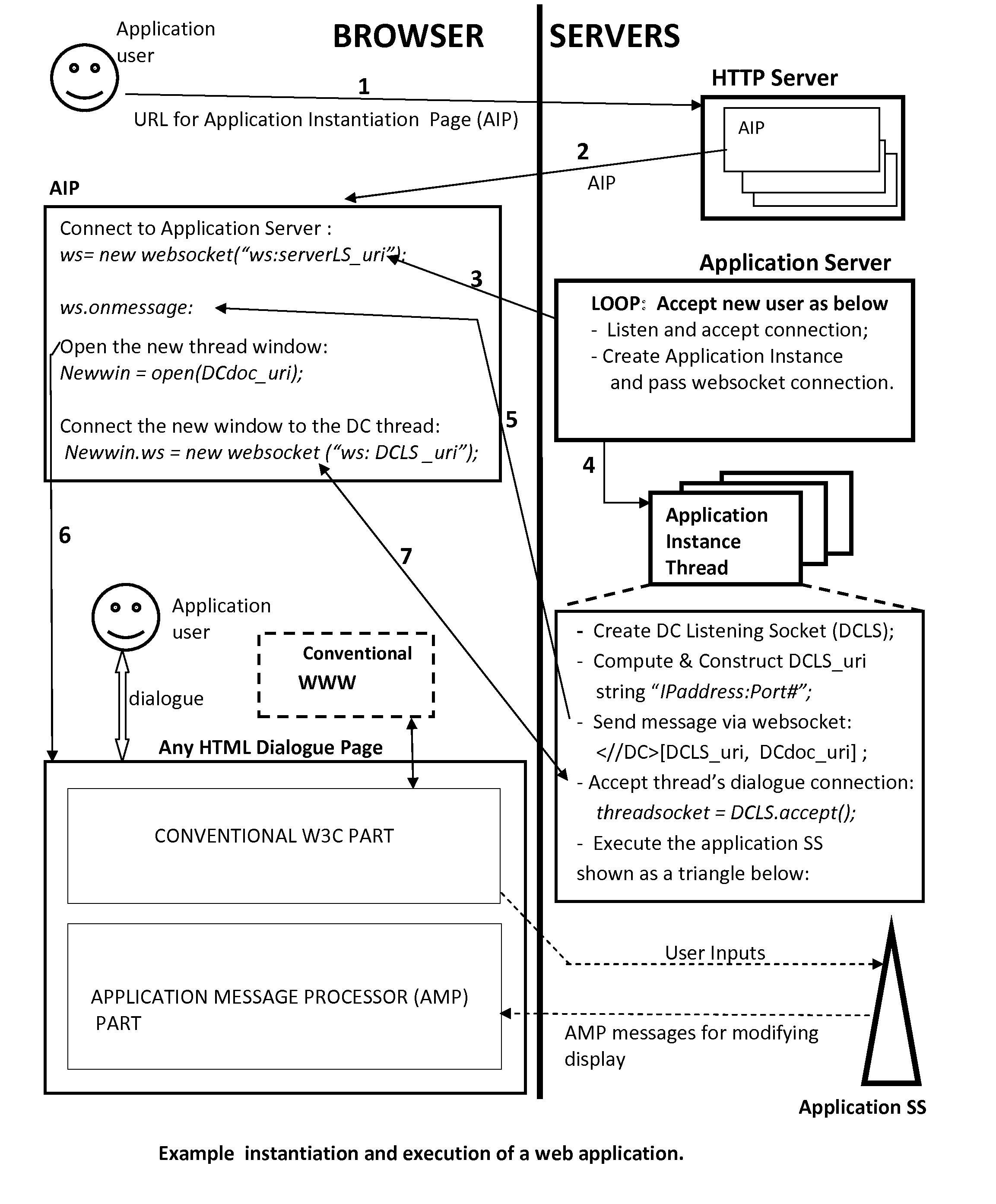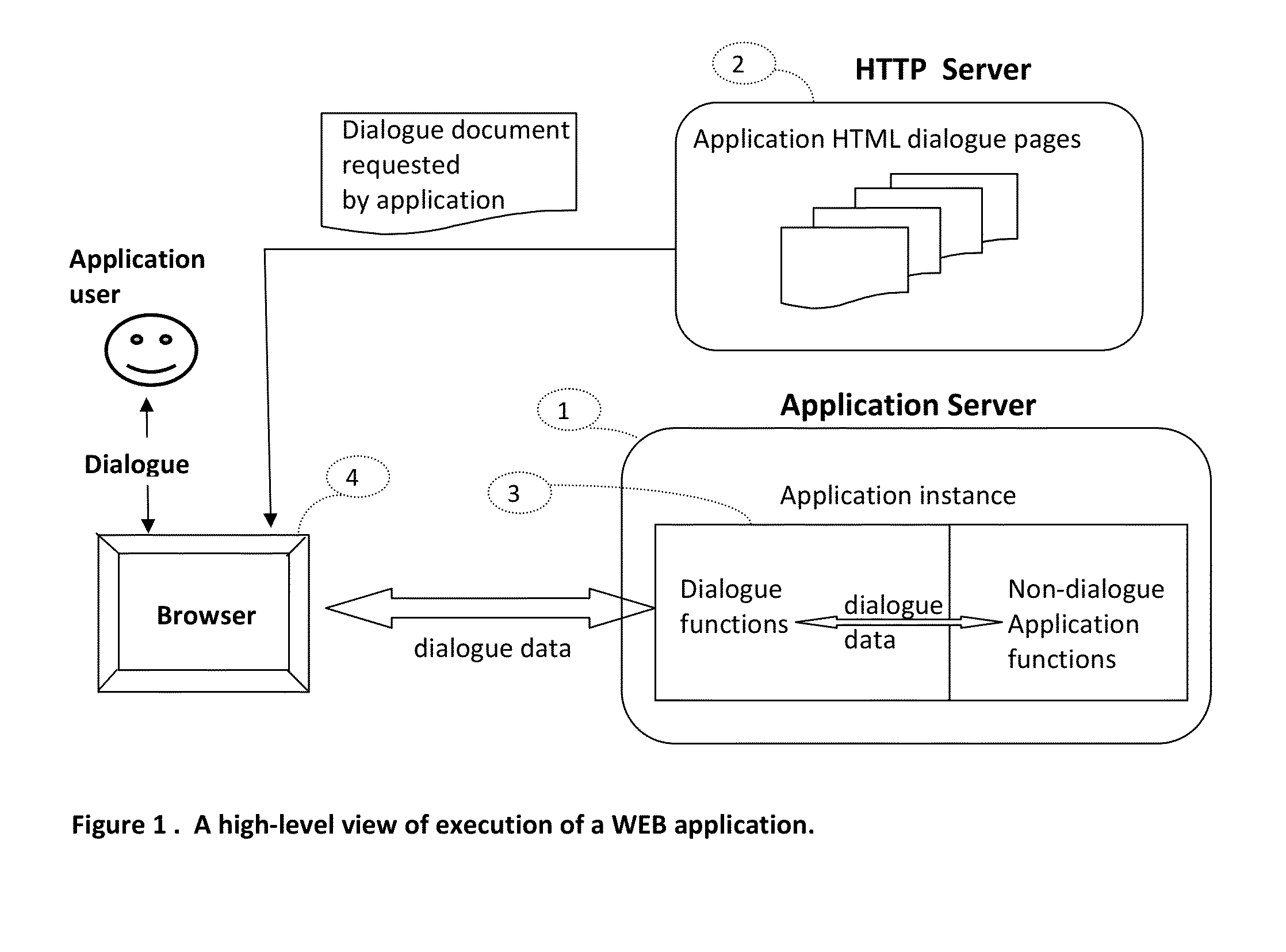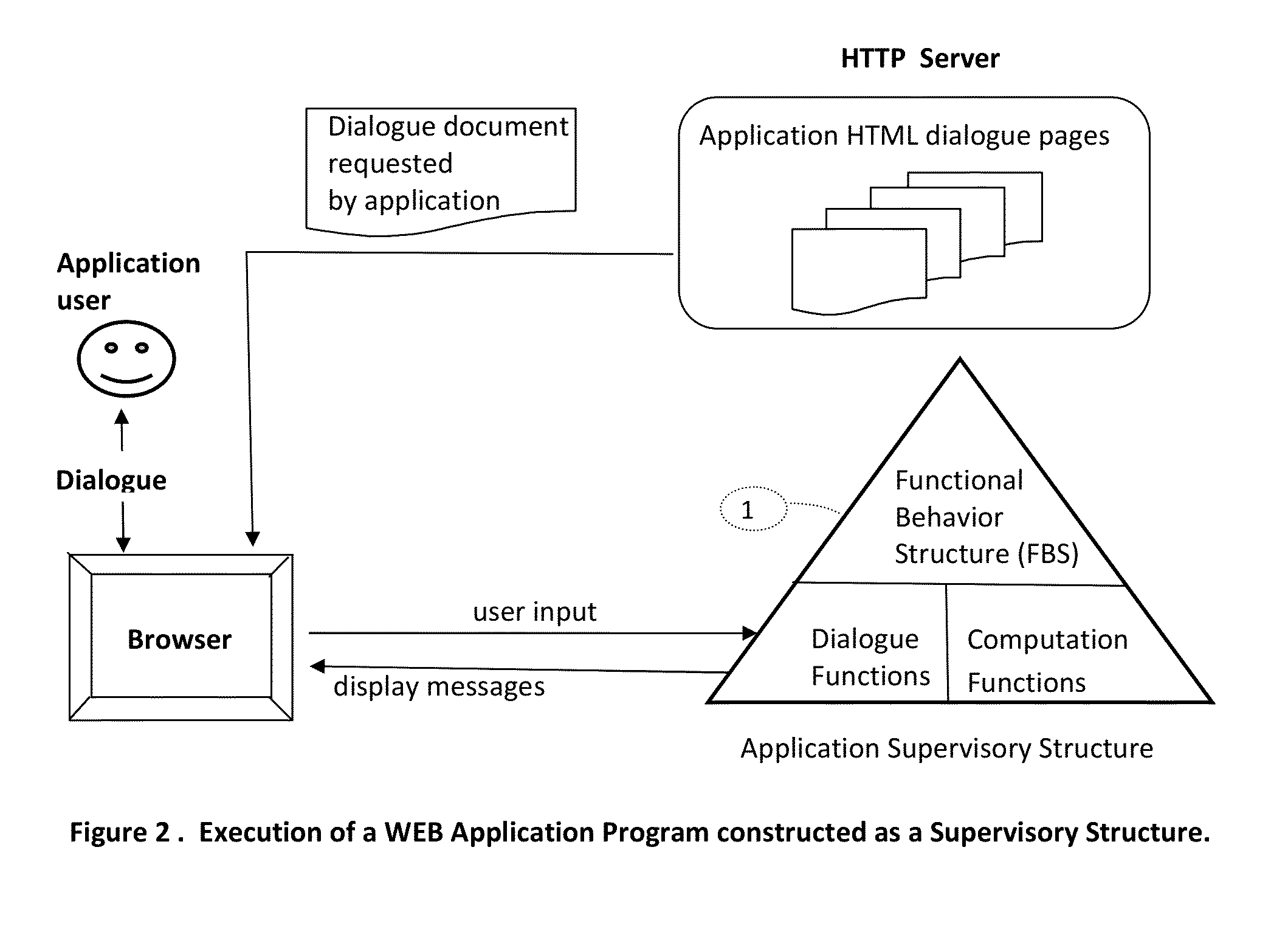Yunten's web application methodology and web programming language (YWAM and WPL)
a software engineering and web application technology, applied in the direction of source code generation, electrical equipment, transmission, etc., can solve the problems of not helping in developing large complex distributed applications such as multi-user-type enterprise applications, and not having a comprehensive software engineering methodology for developing web applications
- Summary
- Abstract
- Description
- Claims
- Application Information
AI Technical Summary
Benefits of technology
Problems solved by technology
Method used
Image
Examples
Embodiment Construction
[0040]The detailed YWAM embodiment presented in this description extends SUPERvisory Methodology And Notation (SUPERMAN) for Developing Human-Computer Systems [1, 2]. As such, YWAM inherits a full lifecycle methodology built into a Graphical Programming Language (GPL). For clarity of presentation, this description will also utilize the GPL notation which will be briefly described below. Other embodiments of the invention will be apparent to those skilled in the art from consideration of the specification and practice of the invention disclosed herein. The specification and examples are as exemplary only, with a true scope and spirit of the invention being indicated by the claims submitted with this description.
[0041]For clarity of presentation, the remainder of this description is divided into the following subsections:[0042]Application Program Structure;[0043]Browser-Document Structure and Dialogue Data Flow;[0044]Application Instantiation Page (AIP);[0045]Details of Creating and E...
PUM
 Login to View More
Login to View More Abstract
Description
Claims
Application Information
 Login to View More
Login to View More - R&D
- Intellectual Property
- Life Sciences
- Materials
- Tech Scout
- Unparalleled Data Quality
- Higher Quality Content
- 60% Fewer Hallucinations
Browse by: Latest US Patents, China's latest patents, Technical Efficacy Thesaurus, Application Domain, Technology Topic, Popular Technical Reports.
© 2025 PatSnap. All rights reserved.Legal|Privacy policy|Modern Slavery Act Transparency Statement|Sitemap|About US| Contact US: help@patsnap.com



